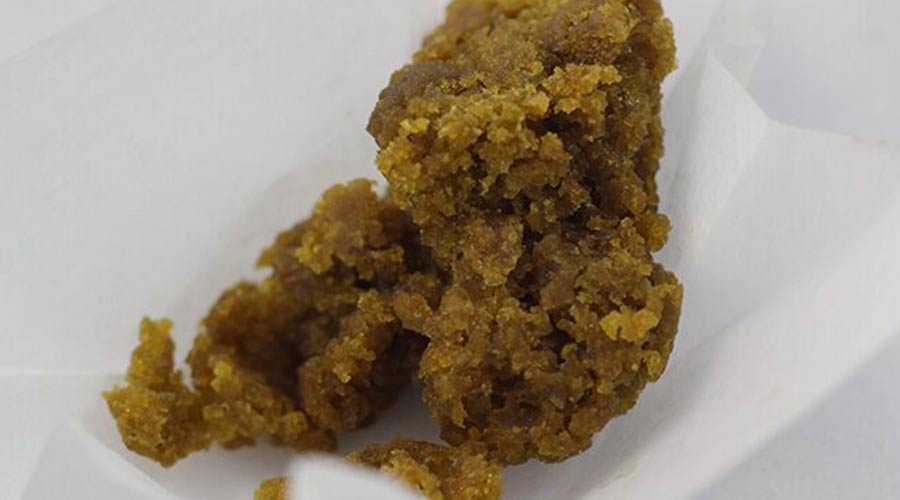Cannabis extracts are quickly becoming the preferred cannabis product for many new and veteran marijuana consumers. Extracts are concentrated forms of the chemical compounds found in the cannabis plant. Manufacturers may employ chemical solvents (e.g. butane, propane, CO2, alcohol) to separate the plant matter from the cannabinoids and terpenes.
Cannabis extracts range in quality, consistency, texture, and purity to form popular types like wax, shatter, crumble, budder, oil, sap, and more for dabbing, smoking, or including in edibles. Solvent-based extracts run the risk of having harmful chemicals. Solventless cannabis extracts are growing in favor among cannabis connoisseurs.
Solventless extracts vs. solvent-based extracts
For many consumers and policymakers, the use of chemical solvents is concerning. Besides the increased risk of an explosion in the presence of hazardous materials, the final product could contain a harmful amount of residual solvents. Some states are adopting cutoff limits for the maximum amount of solvent that can be in a cannabis product.

When compared to solvent-based extracts, solventless extracts are a purer product free from chemical contamination.
Health-conscious consumers and those using cannabis for medical purposes have turned to solvent-free cannabis extracts to avoid consuming chemical toxins during inhalation. The extent of the harm caused by chronic inhalation of residual solvents has not been studied enough. Solventless extracts provide customers with a cleaner alternative to solvent-based extracts such as BHO or CO2 oil.
Types of solventless extracts
There are various types of solventless extracts.
Rosin
Rosin is one of the more popular solventless cannabis extracts due to its purity, potency, and flavor. When heat and pressure are applied to cannabis flower, kief, or trim, trichomes squeeze out as a sappy and amber-hued resin. Rosin dabs can be made at home using a hair straightener, or in a more industrial setting using countertop rosin presses that apply thousands of pounds of pressure to the starting material.
Rosin usually has a shatter-like consistency, but can also be manufactured into a variety of textures that resemble shatter, wax, budder, crumble, and other extract types. Rosin can be dark in color or a golden yellow hue, depending on the amount of plant material present.
Rosin budder
Rosin budder is a “whipped” variety of rosin made by applying a bit of heat and agitation. The whipped rosin may resemble a frosting or butter. Budder consistency can slightly differ ranging from a sauce to a more crumbly consistency.
Technological advancements in extraction equipment have made making solventless dabs more affordable for manufacturers and accessible to customers. What was once the preferred and only available extract form has now gained renewed interest in the cannabis community. Keep an eye out for new and innovative solventless extracts that push the limits of potency and flavor.
Hash: a relic of the past
Hash is the oldest-known cannabis concentrate made by squeezing together kief, the tips of the resinous trichome glands on cannabis flower. There is a variety of ways to make hash, some including the use of water or ice. One of the first methods by which hash was created was by hand-rubbing the flower buds and scraping off the sticky trichomes with a knife forming them into a ball.
The color and quality of hash can vary depending on the cannabis cultivar, growing conditions, and quality of raw material. Some hash may be packed tight and feature a dark color, while other hash can have a crumbly consistency. Either way, hash is always fragrant and packs a punch.
Dry-sift kief and hash
Dry-sift kief is made by sieving fresh and dried flower buds or trim over a variety of mesh screen filters to separate the fragrant and powdery kief from the plant matter. Dry sift kief can be hand-shaken or mechanically agitated over mesh screens. The resulting kief powder can be added into joints, edibles, or shaped into hash for dabbing.
Multiple-chamber grinders can also separate the trichomes from ground-up weed into a repository in the bottom chamber. Users can accumulate a mixture of trichomes over time, resulting in a complex, multi-strain kief.
Ice-water hash
Water-based hash extracts use ice, water, agitation, filtration bags, and various mesh screen sizes to separate the trichomes from the raw cannabis material. The process works because cannabinoids aren’t water-soluble. Extractors often use fresh frozen buds because the trichomes can break off easier.
Freeze-dried hash
A small percentage of manufacturers are using freeze driers to preserve their hash from degrading and losing potency over time. Freeze-drying hash reduces exposure to air and moisture that can affect the quality, aroma, and flavor of the hash.


Thank you for creating this informative blog on solventless cannabis extraction. Your dedication to providing accurate and valuable information is truly appreciated. Keep up the great work!